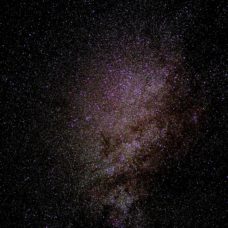NASA has finally released its long-overdue national exploration plan to bring humans back to the moon and beyond.
The National Aeronautics and Space Administration‘s national exploration plan that was submitted to the Congress last December 2017 was finally made public. On September 24th, the National Space Exploration Campaign Report, which contains a 21-page report about the U.S. space agency’s plans to send humans back to the moon and on to Mars, was posted in NASA’s website.
The document was in response to the NASA authorization act of 2017 which requires the agency to provide “an integrated set of exploration, science, and other goals and objectives” for the missions near or on the surface of the Red Planet by thr 2030s. While there was no direct mention of lunar exploration, development of cislunar space capabilities was included.
A part of the report reads:
“In December of 2017, President Donald J. Trump signed Space Policy Directive-1 (SPD-1). The President directed the NASA Administrator ‘to lead an innovative and sustainable program of exploration with commercial and international partners to enable human expansion across the solar system and to bring back to Earth new knowledge and opportunities. Beginning with missions beyond low-Earth orbit, the United States will lead the return of humans to the Moon for long-term exploration and utilization, followed by human missions to Mars and other destinations.'”
According to NASA, their national exploration plan has five strategic goals which include:
- Transition U.S. human spaceflight activities in low-Earth orbit to commercial operations that support NASA and the needs of an emerging private sector market.
- Lead the emplacement of capabilities that support lunar surface operations and facilitate missions beyond cislunar space.
- Foster scientific discovery and characterization of lunar resources through a series of robotic missions.
- Return U.S. astronauts to the surface of the Moon for a sustained campaign of exploration and use.
- Demonstrate the capabilities required for human missions to Mars and other destinations.
Few details were given by the space agency on how it will achieve its goals. Aside from the cislunar space development, the report only mentioned a series of lunar landers, beginning with a payload space NASA aims to acquire on commercial landers. All these lead to a larger lander that could carry both astronauts and cargo by 2020s.
“We’re not really going back to the moon. We’re going forward to the moon. We’re going to the moon to prove out the capabilities and technologies and operational concepts to eventually move on to Mars and other destinations,” Steve Jurczyk, NASA’s association administrator, said in a panel discussion at the American Institute of Aeronautics and Astronautics Space Forum last September 19th in Orlando.
In a separate interview, NASA administrator Jim Bridenstine said that they are still going to assess the development capabilities “from a whole host of different companies across the United States and, in fact, international partners to determine who can provide what”.
“All that is in development right now, and I’m not at this juncture willing to step out and say who’s where in the process,” Bridenstine added.
On the other hand, the planned Mars exploration by 2030s is still deemed flexible and could change if NASA scientists encounter issues in the process. Before the mission, the space agency will have to focus on other projects like the launching of 13 CubeSats into low Earth orbit by 2020 to understand how to prepare payloads for space travel.
NASA’s national exploration plan was noticeably filled with gaps between the missions that they want to accomplish. However, it shows just how much the space agency wants to be prepared for interplanetary travel. Should NASA stick with its timeline, it might eventually achieve its plans and guide humanity further into space.



















Comments (0)
Least Recent